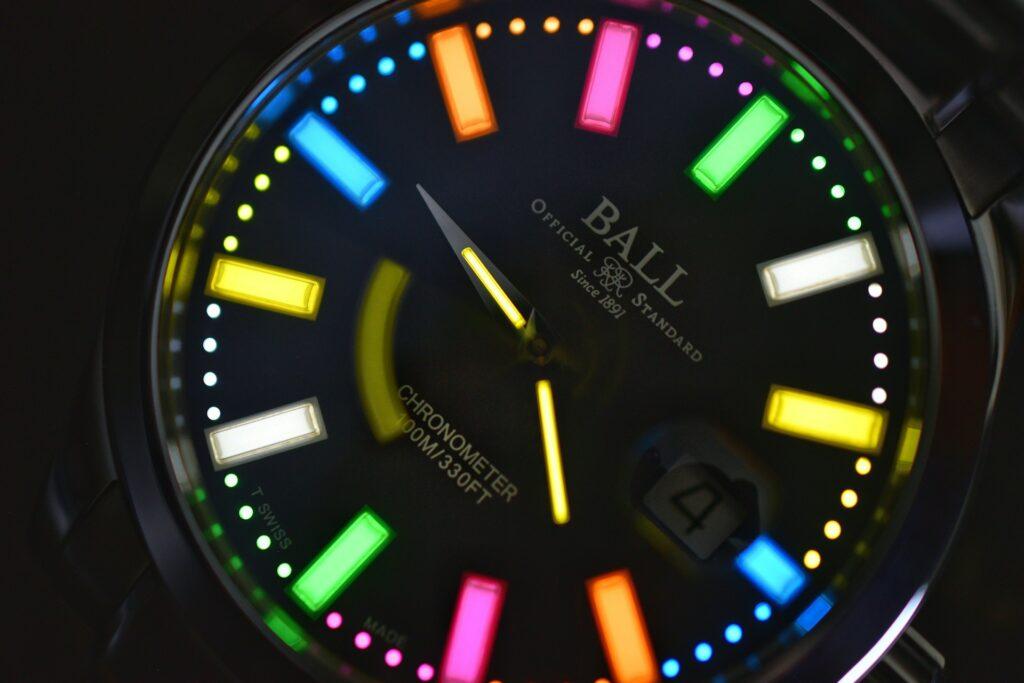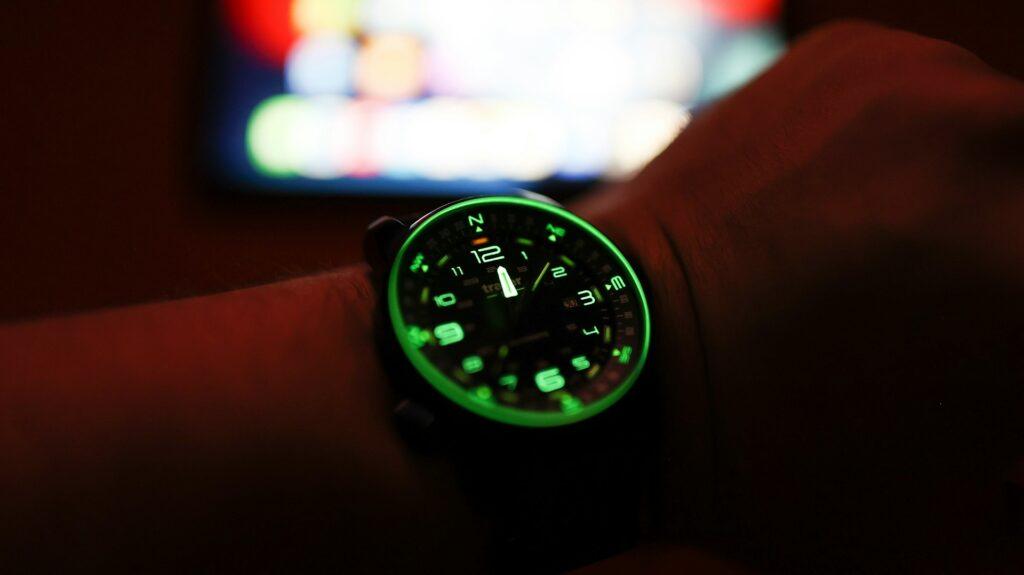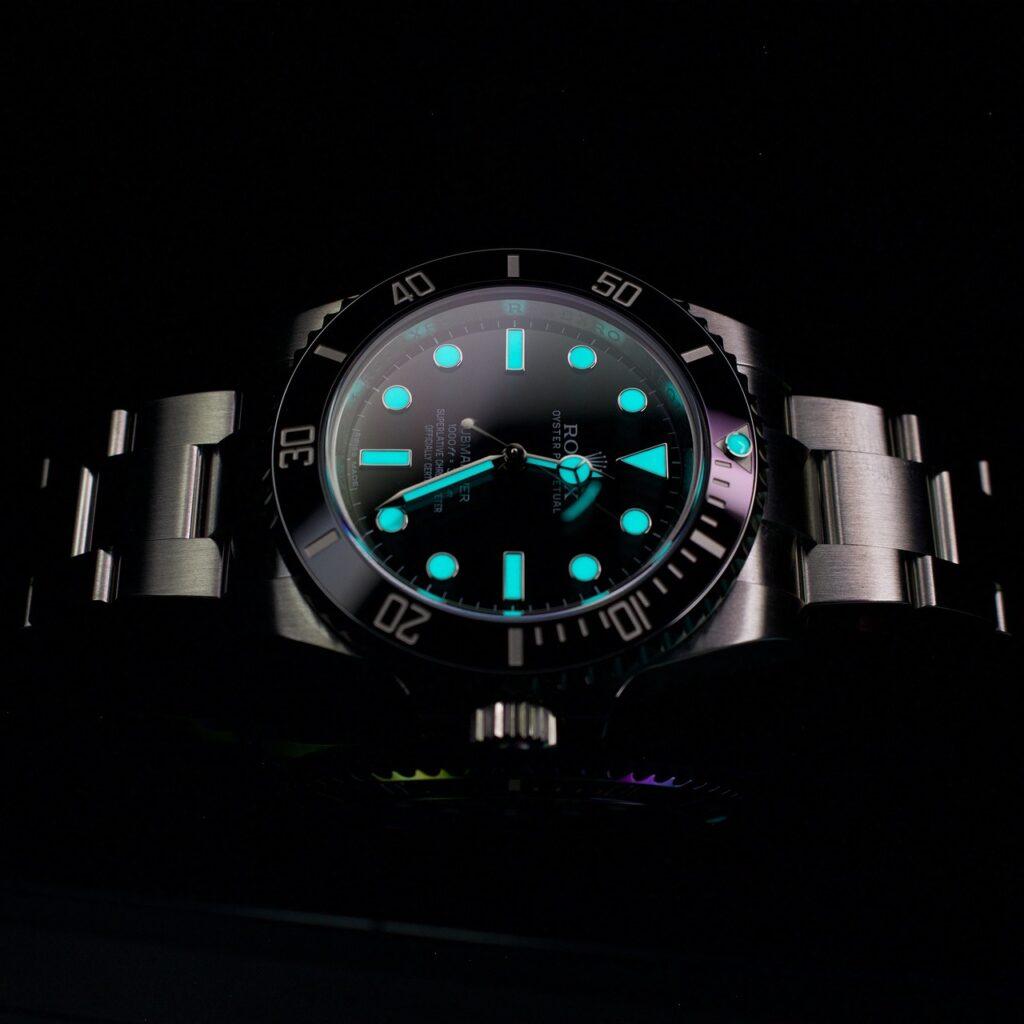Watch Luminosity Guide: Everything You Need to Know
Ever glanced at your watch dial in the dark and found yourself squinting to read the time? That’s where watch luminosity comes in – it’s not just a fancy feature, but something that can make your watch genuinely useful when the lights go down.
In this post, we’ll break down everything you need to know about watch lume—how it works, the different types available, their pros and cons, and how to choose the perfect one to suit your style and needs. Whether you’re hunting for your first proper watch or just curious about that faint green glow on your wrist, you’ll find practical answers here.
Let’s cut through the confusion and get into what really matters about watch lume.
Contents
What is Watch Luminosity?
Watch luminosity refers to the ability of a watch’s hands, markers, and indices to emit light, making them visible in low-light or dark environments. This feature is crucial for legibility, ensuring you can easily read the time, no matter the lighting conditions. The luminous materials used in watches are designed to absorb and store energy from light sources (natural or artificial), and then release that stored energy in the form of a glowing light.

The most common luminous material used in modern watches is Super-LumiNova, a photoluminescent compound that’s both safe and long-lasting. However, there are other options, too, such as Tritium, a gaseous radioactive isotope that constantly emits light without needing to be charged.
Types of Watch Luminosity
When it comes to watch luminosity, there are two main categories: self-powered and light-charged. Let’s take a closer look at each:
1. Self-Powered Luminosity
As the name implies, self-powered luminous materials don’t require an external light source to glow. Instead, they rely on radioactive isotopes like Tritium or Promethium to continuously emit light.

While these materials offer consistent luminosity without needing to be charged, they do have a finite lifespan and may require periodic replacement.
Pros:
- Constant luminosity, even in total darkness
- No need for charging or exposure to light sources
- Ideal for professionals working in low-light conditions (e.g., military, diving, etc.)
Cons:
- Potential environmental and health concerns associated with radioactive materials
- More expensive than light-charged luminosity
2. Light-Charged Luminosity
This type of luminosity relies on photoluminescent materials, such as Super-LumiNova or Luminova, which absorb and store energy from light sources (natural or artificial). When exposed to darkness, these materials release the stored energy in the form of a glowing light.

Pros:
- Longer-lasting and more affordable than self-powered luminosity
- Environmentally friendly and safe
Cons:
- Luminosity fades over time and requires regular recharging
- Brightness and duration of glow may vary depending on the quality of the luminous material and the amount of light exposure
Maintaining and Improving Watch Luminosity:
Regardless of the type of luminosity your watch features, there are steps you can take to maintain and even improve its brightness and longevity. Here are some tips to keep in mind:
1. Light Exposure
For light-charged luminosity, regular exposure to light sources is crucial. Make sure to place your watch near a window or under bright artificial light for a few hours each day to “recharge” the luminous material. This will help ensure maximum brightness and longer-lasting luminosity.
2. Proper Storage
When not wearing your watch, store it in a well-lit area or near a light source. Avoid keeping it in complete darkness for extended periods, as this can cause the luminous material to drain its stored energy.
3. Professional Reluming Services
Over time, the luminous materials in your watch may lose their potency or become dull. If this happens, consider seeking professional reluming services. Watchmakers can replace the old luminous material with fresh, high-quality compounds, restoring your watch’s luminosity to like-new condition.
4. DIY Reluming
For the more adventurous watch enthusiasts, there are DIY reluming kits available. These kits come with luminous compounds and tools, allowing you to apply fresh luminous material to your watch’s hands and markers yourself. However, be cautious and follow instructions carefully, as improper application can lead to damage or suboptimal results.
Choosing Watches with Excellent Luminosity
When shopping for a new watch, paying attention to its luminosity can be a game-changer, especially if you frequently find yourself in low-light environments. Here are some tips for selecting watches with superior luminosity:
1. Luminous Material Quality
Look for watches that use high-quality luminous materials like Super-LumiNova or Tritium. These materials tend to offer brighter and longer-lasting luminosity compared to cheaper alternatives.
2. Application Techniques
How the luminous material is applied to the watch can also impact its luminosity. Brands that use advanced application techniques, such as multiple layers or precision application, often produce watches with superior luminosity.
3. Brand Reputation
Certain watch brands are renowned for their exceptional luminosity, such as Seiko, Citizen, and Ball Watch Company. These brands have a long history of mastering luminous technology and consistently deliver watches with outstanding luminosity.
4. Professional/Tactical Models
Watches designed for professionals like divers often prioritize luminosity as a crucial feature. These models tend to offer superior luminosity and visibility in low-light conditions.
Conclusion
Phew, that was a lot of information, but we’ve covered all the essentials when it comes to watch luminosity! Whether you’re a seasoned watch collector or just starting to appreciate the finer details of timepieces, understanding luminosity can truly elevate your watch-wearing experience.
Remember, maintaining and improving your watch’s luminosity is all about regular light exposure, proper storage, and occasional refreshing of the luminous materials. And when it’s time to add a new watch to your collection, don’t hesitate to prioritize luminosity as a key factor in your decision-making process.
As always, feel free to share your experiences, tips, or questions about watch luminosity in the comments below. We love hearing from you!
FAQ
The duration of luminosity depends on the type and quality of the luminous material used, as well as proper maintenance. Self-powered luminosity has a finite lifespan, typically ranging from 5 to 25 years, after which the radioactive material needs to be replaced. Light-charged luminosity can last indefinitely but requires regular exposure to light sources to “recharge” the luminous compound.
Tritium-illuminated watches are generally considered safe for normal wear as the radioactive material is encapsulated and sealed within the watch. However, it’s important to handle and dispose of these watches properly and according to regulations.
While DIY reluming kits are available, it’s generally recommended to seek professional reluming services from a qualified watchmaker. Improper application can lead to suboptimal results or damage to your watch.
While luminosity is crucial for certain types of watches, such as dive watches, it may not be as important for dress watches or watches primarily worn in well-lit environments. Consider your intended use and personal preferences when evaluating the importance of luminosity.
Yes, it’s possible to improve the luminosity of older watches through professional reluming services. Watchmakers can replace the old, faded luminous material with fresh, high-quality compounds, restoring the watch’s luminosity to like-new condition.